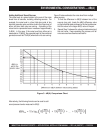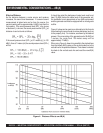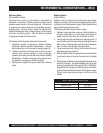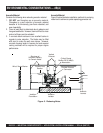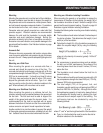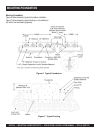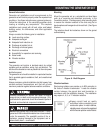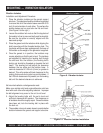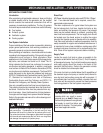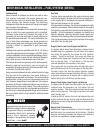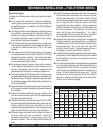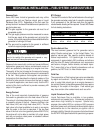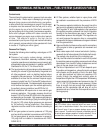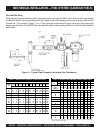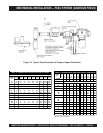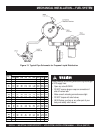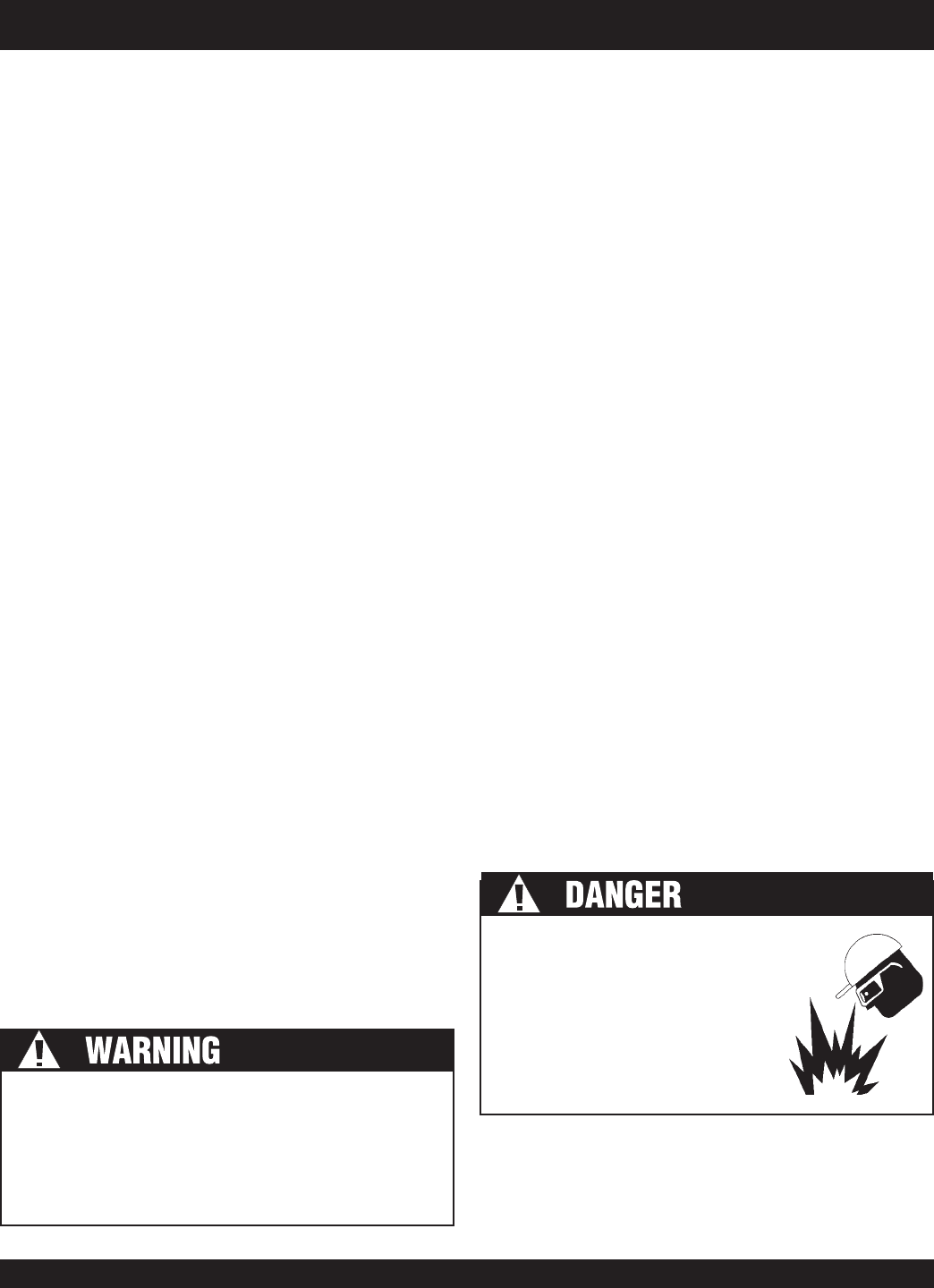
INDUSTRIAL GENERATOR SETS — APPLICATION & INSTALLATION MANUAL — REV. #4 (09/07/07) — PAGE 37
MECHANICAL INSTALLATION — FUEL SYSTEM (DIESEL)
MECHANICAL CONNECTIONS
Introduction
After considering all applicable codes and laws and finding
a suitable location site for the generator set, the installer
should consider the mechanical connections that will be
necessary to make during installation. The four (4) systems
that could require mechanical connections are the following:
z
Fuel system
z
Exhaust system
z
Ventilation system
z
Cooling system
Fuel System Installation
Proper installation of the fuel system is essential in obtaining
proper genset performance, safe working conditions, and
preventing property and environmental damage.
When planning an installation, check state and local codes
regarding fuel storage and handling. Piping and fuel system
components must conform to these regulations. Most
applications in the United States require that storage tanks,
day tanks, and subbase fuel tanks be UL listed. The UL
listing indicates that the tank has conformed to a series of
construction and testing standards. In addition, most tanks
must conform to National Fire Protection Association (NFPA)
construction and installation requirements. The three NFPA
codes that apply to day tanks and subbase fuel tanks are
NFPA 30, Flammable and Combustible Liquids Code; NFPA
37, Standard for Installation and Use of Stationary
Combustible Engine and Gas Turbines; and NFPA 110,
Standard for Emergency and Standby Power Systems.
Use only compatible metal fuel lines to avoid electrolysis.
This practice is particulary important when fuel lines must
be buried. Buried fuel lines must be protected from any
kind of corrosion. Use a
flexible
section of tubing between
the engine and fuel supply line to prevent vibration damage.
Refer to the generator set manual for outline drawings and
detailed information.
Diesel Fuel
MQ Power Industrial generator sets use ASTM No. 2 Diesel
fuel. If an alternate diesel fuel is required, consult the
appropriate engine manual.
The main components of a typical diesel fuel system are
the fuel storage tank, fuel lines, transfer fuel tanks or day
tanks, and auxiliary fuel pumps or lift pumps. Fuel storage
tanks may be located indoors or outdoors, providing they
meet local code requirements. The fuel supply tank should
be located near the diesel engine to enable the engine
mounted fuel transfer pump to operate within its capability.
Fuel filters and fuel/water or sediment separators must be
easily accessible for regular and scheduled maintenance. It
is important to have a clean installation, making every effort
to prevent entrance of moisture, dirt or contaminants of any
kind. Clean all fuel system components before installing.
Supply Tank
Locate the supply fuel tank as close as possible to the
generator set and within the five (5') foot (1.5 m) lift capacity
of the engine fuel pump. Any fuel tank transfer pump capacity
and supply piping should be sized on the basis of the
maximum fuel flow rating. Refer to the generator set data
sheet for detailed fuel consumption data.
If the main fuel tank is installed below the lift capabilities of
the standard engine fuel pump, a transfer tank (referred to
as a day tank) and auxiliary pump also will be required. If
an overhead main fuel tank is installed, a transfer tank and
float valve will be required to prevent fuel head pressures
from being placed on the fuel system components.
Fuel leaks create fire and explosion
hazards which can result in severe
personal injury or
death!
Always use
flexible tubing between the engine and
fuel supply to avoid line failure and
leaks due to vibration. The fuel system
must meet applicable codes.
NEVER use galvanized or copper fuel lines and fittings for fuel
tank connection. Condensation in the tank and fuel lines
combines with the sulfur in diesel fuel to produce sulfuric acid.
The molecular structure of the copper or galvanized lines reacts
with the acid and contaminates the fuel, which can clog filters
and damage the engine fuel injection pump.



